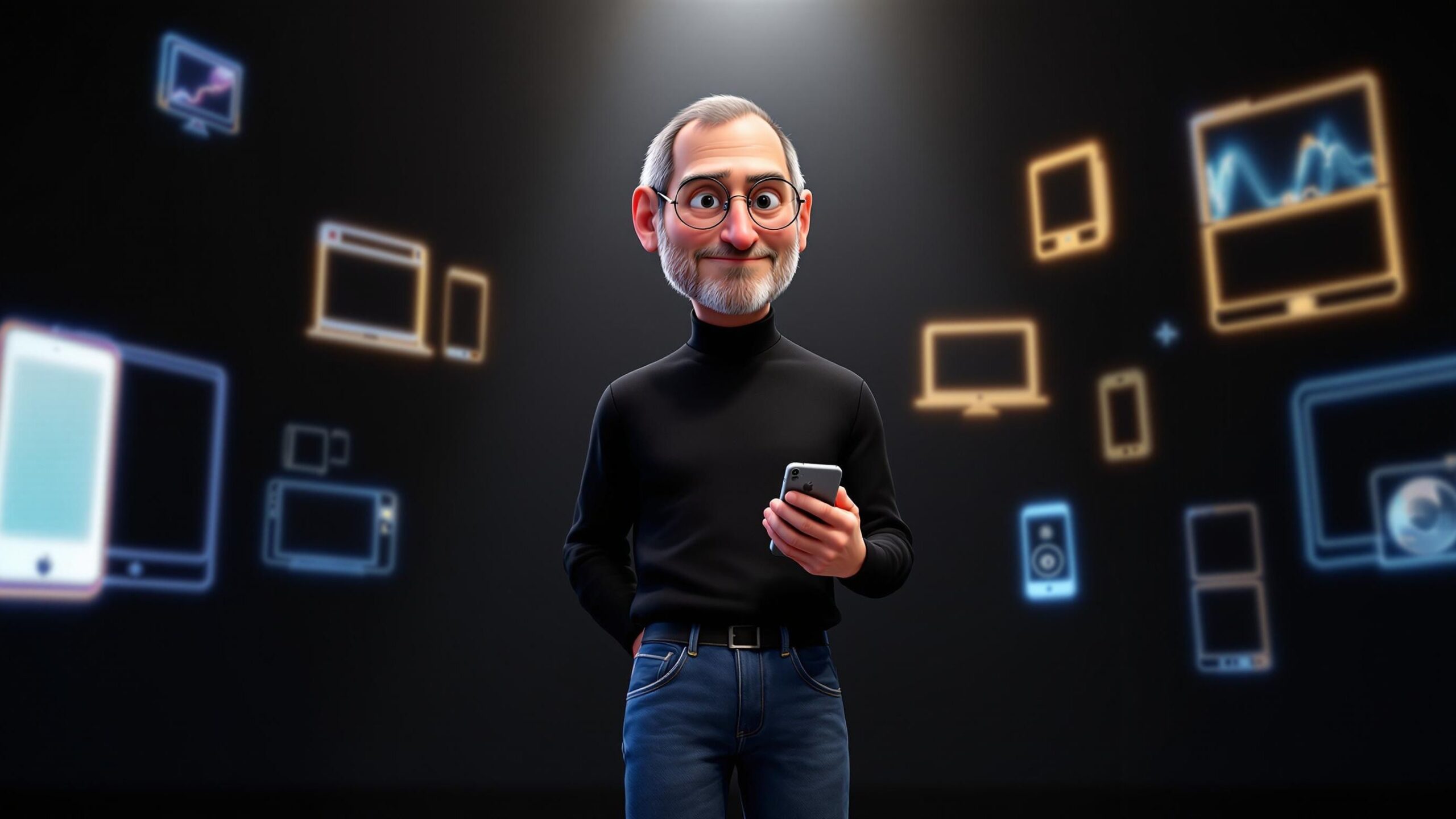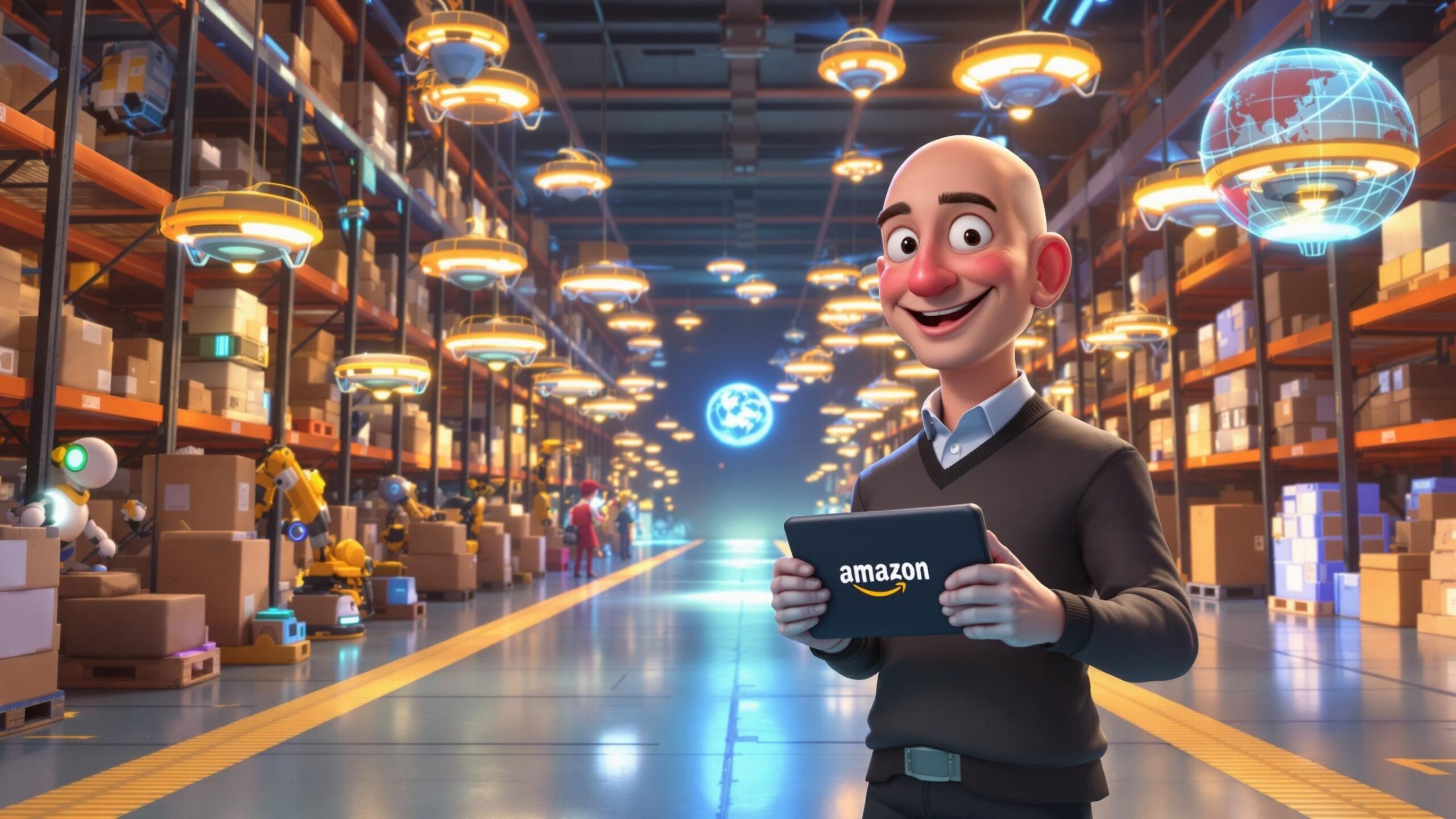Few figures in the history of technology have blended artistry, innovation, and showmanship quite like Steve Jobs. With his black turtleneck, jeans, and unmistakable charisma, Jobs wasn’t just the co-founder of Apple—he was its heart, its provocateur, and its prophet. To some, he was a modern-day Edison; to others, a demanding perfectionist who saw the world not as it was, but as it should be. Whether unveiling the Macintosh in 1984, the iPod in 2001, or the iPhone in 2007, Jobs redefined what it meant to connect, create, and consume. His influence is so embedded in our daily lives that it’s hard to remember a world without the devices he championed. This is the story of how one creative genius didn’t just ride the wave of personal technology—he built it.
Apple’s Humble Beginning: A Garage and a Vision
In 1976, a scrappy young man named Steve Jobs teamed up with his brilliant, soft-spoken friend Steve Wozniak and began assembling computers in a suburban California garage. The result? The Apple I. It wasn’t pretty—it looked more like a piece of DIY hardware than the sleek designs we associate with Apple today—but it worked. And more importantly, it sold. Jobs wasn’t the engineer—Wozniak handled that. What Jobs brought was vision, marketing flair, and an almost mystical ability to see what the public didn’t yet know it wanted. He saw the personal computer not as a tool for hobbyists but as a revolution in how people lived and worked. His drive to bring computing to the masses led to the Apple II, one of the first highly successful mass-produced microcomputers. By the early 1980s, Apple was booming. Then came the Macintosh—a computer with a graphical interface, a mouse, and personality. Jobs introduced it to the world with a now-legendary 1984 commercial that aired during the Super Bowl, casting Apple as the underdog breaking free from the conformity of IBM. It was bold. It was dramatic. It was very Steve Jobs.
A Fall from Grace and the Road Back
Despite his successes, Jobs’ intensity could clash with corporate structures. By 1985, tensions at Apple boiled over, and Jobs was ousted from his own company. For most, that would have marked the end of their story. But for Jobs, it was a beginning. He founded NeXT, a computer company focused on powerful workstations for higher education and business. While NeXT never became a commercial powerhouse, it was instrumental in developing software that would later become the foundation for macOS. Jobs also acquired a little-known animation company from George Lucas, which he renamed Pixar. Pixar, under Jobs’ leadership, released Toy Story in 1995—the first fully computer-animated feature film—and changed cinema forever. It was a triumph of creativity and technology, and it showed that Jobs wasn’t just a computer guy—he was a creative force who could shape entire industries. Meanwhile, Apple floundered without its co-founder. By the mid-1990s, the company was struggling. In a twist worthy of a Hollywood script, Apple acquired NeXT in 1996—and with it, Jobs returned to the company he had started. The comeback kid was home.
The Second Act: iMac, iPod, and Innovation Unleashed
Jobs wasted no time making changes. With his return, Apple underwent a design revolution. He brought in British designer Jony Ive, and together they created the iMac in 1998—a candy-colored computer that looked like no other. It was bold, fun, and an instant success. Jobs had reignited Apple’s creative fire. But he wasn’t done. In 2001, Apple launched the iPod. “1,000 songs in your pocket” wasn’t just a slogan—it was a cultural shift. Music became portable, digital, and personal. The iPod wasn’t the first MP3 player, but it was the first one that made people want to carry music with them everywhere. With iTunes, Jobs created a whole ecosystem, changing not only how we listened to music but how artists released it. And then came the iPhone. In 2007, standing onstage with his signature theatrical flair, Jobs introduced what he called “an iPod, a phone, and an Internet communicator.” It was, of course, all three in one. The iPhone didn’t just revolutionize phones—it redefined mobile computing. With a touchscreen interface, intuitive design, and App Store ecosystem, it became the blueprint for the modern smartphone. Within a few years, the iPhone had changed communication, photography, entertainment, and even the economy itself.
The iPad, the App Store, and an Ecosystem of Innovation
If the iPhone was Apple’s moonshot, the iPad was its elegant cousin. Launched in 2010, the iPad filled the space between phone and computer—offering users a lightweight, intuitive device for reading, watching, and creating. Once again, Jobs anticipated a need before people realized they had it. What tied it all together was the App Store. Launched in 2008, it opened the doors for developers to build tools, games, and services, creating an entirely new digital economy. Jobs didn’t just give us gadgets—he gave us platforms. And with each product, the ecosystem became more seamless. Your phone talked to your laptop, which synced with your tablet, which streamed from your Apple TV. Jobs built more than a brand—he built a lifestyle.
The Perfectionist with a Passion for Beauty
Steve Jobs wasn’t always easy to work with. He was known for his intense focus, high standards, and yes, occasional temper tantrums. He pushed his teams relentlessly, sometimes to the brink. But it was all in service of something greater: creating products that were as beautiful as they were functional. Jobs believed technology should be elegant. He cared about the curve of a corner, the weight of a device, the sound a button made. He once delayed a product because he didn’t like the shade of beige. He didn’t just want things to work—he wanted them to delight. His obsession with detail led to innovations that felt magical: pinch-to-zoom, seamless scrolling, feather-light laptops, Retina displays. Jobs made design a central tenet of tech. In doing so, he inspired a generation of companies to think not just about what their products did, but how they made users feel.
His Final Years and Everlasting Legacy
In 2004, Jobs was diagnosed with a rare form of pancreatic cancer. Despite his illness, he continued working, introducing the world to the iPhone, the iPad, and a new Apple headquarters design. His final keynote in 2011, just months before his passing, was emotional and inspiring. He stepped down as CEO later that year, naming Tim Cook as his successor. Jobs passed away on October 5, 2011. The world mourned. Tributes poured in from global leaders, tech giants, artists, and ordinary fans. Apple Stores became makeshift memorials. Even those who never owned an Apple product felt the impact—because Steve Jobs had touched lives not just through technology, but through the sheer force of his imagination.
The iLegacy of Steve Jobs
Steve Jobs didn’t invent the computer, the MP3 player, or the smartphone—but he reimagined each of them so completely that it felt like he had. He didn’t just lead a company—he led a cultural transformation. Jobs showed that technology could be personal, intuitive, and even joyful. He fused art with engineering, intuition with interface, and dreams with deadlines. From the glow of the first Macintosh to the sleek feel of the iPhone in your hand, Jobs’ influence is everywhere. His life was a testament to the power of bold ideas, relentless passion, and a refusal to accept anything less than extraordinary. The world he left behind is more connected, more creative, and more curious because of him. Steve Jobs didn’t just think different. He was different. And because of him, so are we.




